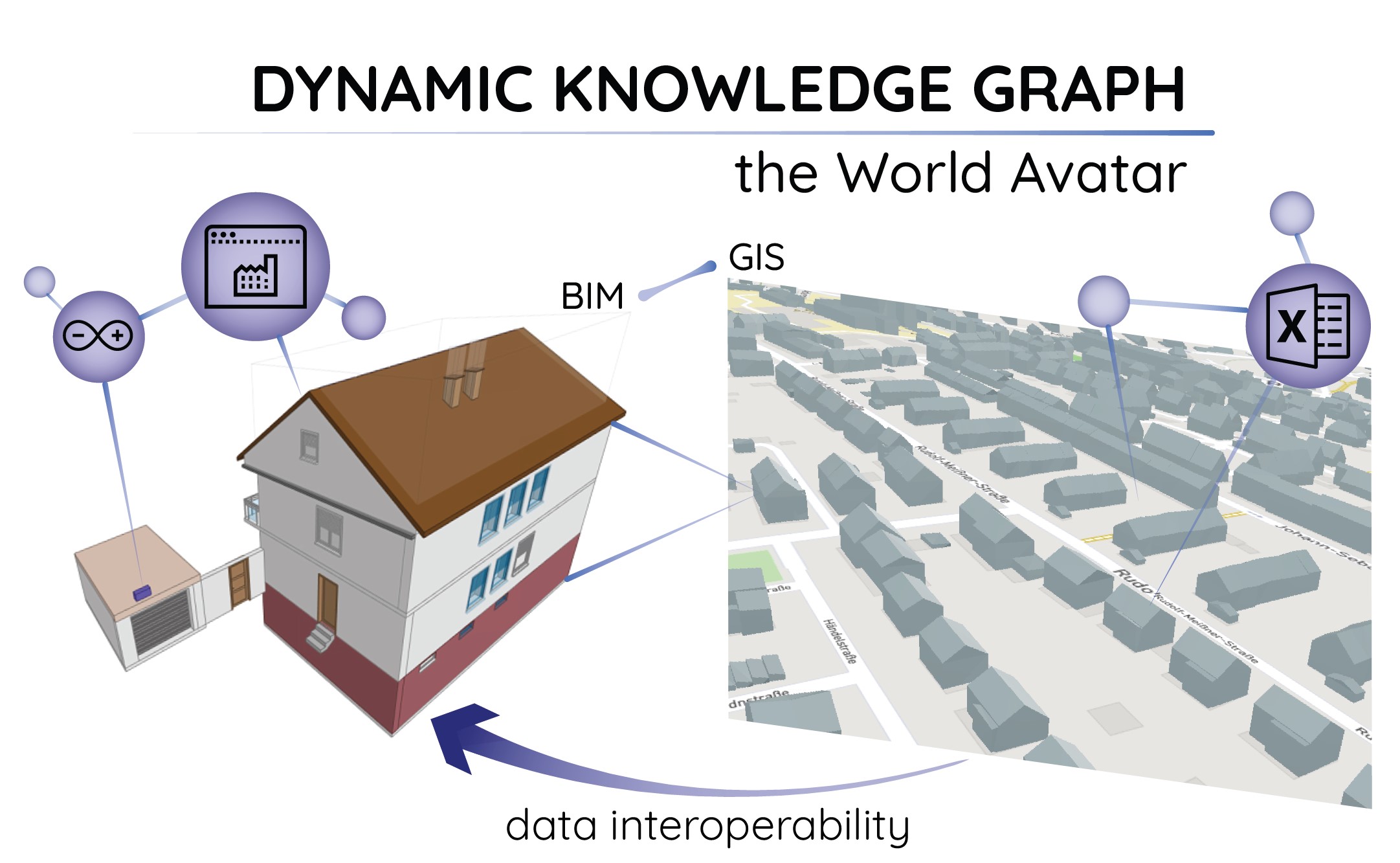Technical Report 311, c4e-Preprint Series, Cambridge
BIM-GIS Integration: Knowledge graphs in a world of data silos
Reference: Technical Report 311, c4e-Preprint Series, Cambridge, 2023
- Semantic Web technologies are suited to overcome and connect current data silos.
- Knowledge graphs offer promising solution to integrate both BIM and GIS data.
- Integration of data beyond BIM and GIS enables real interoperability.
- Dynamic knowledge graphs foster dynamism, modularity, and cross-domain collaboration.
- Unified visualisation interface enables data access across domains and scales.
 Cities today adopt various technologies to gather and analyse cross-domain data including Building Information Modeling (BIM) and Geographic Information System (GIS) to manage urban developments and their consequences. However, BIM-GIS integration has encountered obstacles given their disparate formats and protocols. Even when integration is achieved, solutions face difficulties incorporating other data sources such as sensors and Excel spreadsheets. Given the poor interoperability of existing urban technologies, this paper proposes a dynamic knowledge graph approach, comprising of domain ontologies, autonomous agents, and visualisation interfaces, to integrate cross-domain multi-scale data including BIM-GIS. The ontologies developed semantically annotate and represent data and their relationships with standardised definitions to align stakeholder perspectives. Agents can perform tasks such as data retrieval, processing, computation, and forecasting on the real world via the knowledge graph. The visualisation interface allows users to view and analyse real-time data for a holistic understanding of the current situation and alternate scenarios.
Cities today adopt various technologies to gather and analyse cross-domain data including Building Information Modeling (BIM) and Geographic Information System (GIS) to manage urban developments and their consequences. However, BIM-GIS integration has encountered obstacles given their disparate formats and protocols. Even when integration is achieved, solutions face difficulties incorporating other data sources such as sensors and Excel spreadsheets. Given the poor interoperability of existing urban technologies, this paper proposes a dynamic knowledge graph approach, comprising of domain ontologies, autonomous agents, and visualisation interfaces, to integrate cross-domain multi-scale data including BIM-GIS. The ontologies developed semantically annotate and represent data and their relationships with standardised definitions to align stakeholder perspectives. Agents can perform tasks such as data retrieval, processing, computation, and forecasting on the real world via the knowledge graph. The visualisation interface allows users to view and analyse real-time data for a holistic understanding of the current situation and alternate scenarios.
Material from this preprint has been published in Journal of Building Engineering.
PDF (4.7 MB)



